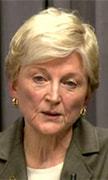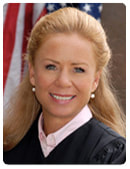Evers proposes $45.8 million for Milwaukee juvenile facility; DOC capital budget totals $119 million2/26/2021  Evers Evers By Gretchen Schuldt Gov. Tony Evers is proposing to spend $45.8 million on a new juvenile facility in Milwaukee, budget documents show. "The facility in this request will assist DOC (Department of Corrections) with working towards meeting the requirements of Act 185 and Act 8, which were created with the intent of eventually converting Lincoln Hills and Copper Lake Schools buildings into adult facilities," the proposed budget says. Lincoln Hills and Copper Lake are the state's secure juvenile prisons. The proposal is part of the proposed 2021-23 state capital budget. The governor recommended a total of $119.1 million in DOC capital spending. Milwaukee County last year held off on accepting $15.2 million in state funding to develop a secure residential center for juvenile offenders because the funding was inadequate. The county earlier sought $41.8 million from the state to increase the number of juvenile beds available. It later reduced the proposal to $26 million, and then $17.9 million. Even then, the county would have to kick in $2.7 million of its own funding. At the time he rejected the $15.2 million, County Executive David Crowley said that the funding gap and continuing operational costs "creates significant sustainability concerns,” according to the BizTimes. Crowley said Friday he was encouraged by the governor's general and capital budget proposals. The proposed youth facility would be about 59,000 square feet with "housing, food services, health services, education, counseling, vocational training, visitation, recreation, administrative services, and other supporting spaces for a population up to 32 juveniles," according to the budget proposal. It would employ about 70 people and cost $7.7 million per year to operate. Evers also rejected a $45.4 million funding request for a juvenile facility in Outagamie County. Other DOC capital spending recommended by Evers include the projects listed below. $18.6 million for a new health services unit at Dodge Correctional Institution. Dodge is the prison system's intake facility and in fiscal 2019 there were 7,178 intakes; the prison's population is more than 1,600. Each new inmate requires a minimum of 3 HSU appointments, and some can require four to eight appointments. The existing 12,300-square-foot facility "is very congested," the proposed budget says. "There are no medical observation cells or negative pressure rooms. There are several shared areas, such as the treatment room is shared with ER. There are staff doing data entry for electronic medical records in the X-ray room because there is no space for them." The new HSU would add 36,558 square feet.
0 Comments
Note: We are crunching Supreme Court of Wisconsin decisions down to size. The rule for this is that no justice gets more than 10 paragraphs as written in the actual decision. The "upshot" and "background" sections do not count as part of the 10 paragraphs because of their summary and very necessary nature. We've also removed citations from the opinion for ease of reading, but have linked to important cases cited or information about them. The case: Ted Ritter v. Ted Farrow Majority: Justice Jill Karofsky (24 pages), joined by Justices Rebecca Grassl Bradley, Rebecca Dallet, and Brian Hagedorn Dissent: Justice Patience Roggensack (24 pages) joined by Justices Ann Walsh Bradley and Annette Ziegler  Karofsky Karofsky The Upshot It is a well-settled legal principle that trademarks and their associated goodwill pass with the sale of a business. Therefore, we conclude as a matter of law that: (1) the Association did not acquire the Bibs Resort marks in 1998; and (2) the Farrows became the exclusive owners of the Bibs Resort marks in 2006 when they purchased the resort management business from the Ritters. Consequently, since the circuit court did not apply the well-settled principles surrounding trademarks and trade names, we reverse the grant of summary judgment to the Ritters and the Association and remand to the circuit court .... Background The subjects of this case are a logo depicting a pair of red bib overalls with a handkerchief hanging out of the back pocket and the names "Bibs Resort" and "Bibs." These designations relate to a lakefront resort in St. Germain, Wisconsin, and we are asked to determine their ownership. The three parties involved in this case are: (1) Ted and Carolyn Ritter, original owners of Bibs Resort; (2) Tony and Arlyce Farrow, purchasers of the Ritters' resort management business; and (3) Bibs Resort Condominium, Inc., the condominium association at Bibs Resort ("Association"). The Farrows claim that they assumed ownership of the Bibs Resort marks when they purchased the Ritters' resort management business, and that the Ritters subsequently infringed on those marks. The Ritters and the Association disagree with the Farrows. The circuit court granted summary judgment to the Ritters and the Association.... The circuit court concluded that the Bibs Resort marks "became part of" the Association in 1998 when the resort was converted to a condominium form of ownership. Finding that no one exclusively owned the Bibs Resort marks after that conversion, the circuit court ruled that the Farrows could not have become exclusive owners of the marks when they purchased the Ritters' resort management business in 2006. The court of appeals affirmed on other grounds, ruling that the 1998 resort-to-condominium conversion resulted in the Ritters impliedly transferring the Bibs Resort marks to the Association. The court of appeals reasoned that because of that transfer, the Ritters no longer owned the marks and, as a result, could not have sold them to the Farrows in 2006.... *** In November 2008, unbeknownst to any of the other unit owners, the Farrows filed an "Application for Registration of Marks" with the Office of the Secretary of State of Wisconsin, seeking to register a "pair of red bibs with a kerchief sticking out of pocket" and the resort name of "Bibs." In February 2010, the Farrows filed another application, seeking to register the mark "Bibs Resort." Several months later, the Ritters filed an action against the Farrows which set in motion the decade of litigation that preceded this appeal. The Farrows counterclaimed with multiple causes of action, including trademark infringement. The circuit court eventually dismissed all of the Ritters' claims, and the case proceeded to trial on the Farrows' counterclaims.... The circuit court granted summary judgment to the Association and the Ritters...The circuit court concluded that: (1) "Bibs Resort" was a trade name; (2) the name Bibs Resort "became part of" the Association at the time of the 1998 conversion; (3) although there were disputed issues of fact as to whether the marks were transferred to the Farrows as part of the 2006 sale, that dispute was immaterial because the Ritters did not have exclusive ownership of the marks in 2006; and (4) because each individual condominium owner held rights to "Bibs Resort," no one held exclusive ownership. The Farrows appealed. The court of appeals affirmed the circuit court on different grounds, concluding that, in 1998, the Ritters impliedly transferred the name "Bibs Resort" to the Association when they converted their resort to a condominium form of ownership; consequently, the Ritters could not have transferred ownership of the name "Bibs Resort" to the Farrows in 2006.... The guts We begin by emphasizing that the Bibs Resort marks indicate the source of the provided goods or services. That is, the Bibs Resort marks represent the resort management services that the Ritters' business continuously provided from Bibs Resort's founding in 1986 until 2006.... Because the Ritters provided ongoing and uninterrupted resort services, returning customers were able to identify their services, and the associated goodwill, with the Bibs Resort marks. Having established this link between the Bibs Resort marks and the resort management services they symbolized, we turn to the Association's argument about the 1998 resort-to-condominium conversion. ... The Association asserts that the Bibs Resort marks were tied to the resort's real property and thus automatically transferred when the Ritters recorded the Declaration and converted the property to a condominium. This argument violates the longstanding principle that marks cannot exist separate and apart from the goodwill of the product or service they symbolize: the resort management services.... Even assuming, incorrectly, that the Bibs Resort marks can be separated from the resort management services they represent, there is no evidence that the Bibs Resort condominium's bylaws conferred on the Association the ability to own any items of intangible property and it is undisputed that the Association never provided goods or services in the resort management service industry.... The Ritters also signed a bill of sale that transferred the personal property and business equipment necessary to operate the resort management business to the Farrows. The parties confirmed the sale of the entirety of the Ritters' resort management business to the Farrows in subsequent documentary filings with the State. Indicative of selling their business to the Farrows, Ted and Carolyn Ritter changed their business name from "Bibs Resort, Inc." to "Ritter Enterprises, Inc...." Following the "old and clear rule, universally followed," the Bibs Resort marks and their associated goodwill passed from the Ritters to the Farrows in 2006 with the sale of the resort management business.... To summarize, the language in the 2006 documents clearly shows that the Ritters sold the Farrows the entirety of their resort management business, which included the associated goodwill and exclusive ownership of and rights to the Bibs Resort marks. The offer to purchase made explicit the Farrows' intention to purchase the goodwill that was inextricably associated with the resort management services. The bill of sale signed by the Ritters further indicates that the resort management business and related goodwill were transferred together in accordance with longstanding practice. The Report of Business Transfer filed by the Ritters and the joint letter the parties sent to the DOR subsequent to the sale provide even more evidence demonstrating the parties' intent to transfer the goodwill and trade names from the Ritters to the Farrows. Based on the ample evidence in the record and well-settled trademark and trade name law, the ownership of the Bibs Resort marks passed with the sale of the Ritters' resort management business in 2006.  The Dissent The majority opinion errs when it fails to apply summary judgment methodology, which is the same for us as it is for the circuit court, and thereby ignores uncontested material facts developed during summary judgment. Those uncontested facts preclude Anthony and Arlyce Farrows' (the Farrows) claim for tradename or trademark infringement. The majority opinion compounds its error when it ignores the common law of Wisconsin in regard to what must be shown at summary judgment to make or defeat a prima facie claim of infringement of tradename or trademark and relies instead on federal case law that is grounded in the Lanham Act.... Susan Roth and Katie Kegel are defense lawyers running for the Milwaukee County Circuit Court Branch 3 bench being vacated by Clare Fiorenza, who is not seeking re-election. Election Day is April 6. Kegel, an assistant state public defender, received her law degree from Marquette University, where she now is an adjunct professor. Her resume is here. Roth, an attorney/partner in the Kohn Smith Roth law firm, also is a Marquette Law School graduate. Her resume is here. WJI asked each of the candidates to answer a series of questions. The answers are presented here as submitted. The questions asked are patterned after some of those on the job application Gov. Evers uses when he is considering judicial appointments. Added bonus! The two candidates will discuss their positions and qualifications at the March 10 WJI Virtual Salon. The free Zoom event will be from noon to 1 p.m. Register here.
 Thompson Thompson By Gretchen Schuldt The State Legislature has authorized pay raises for lawyers in the State Public Defender's Office that will allow them to regain parity with their counterparts in prosecutors' offices. The bill will allow SPD to give merit pay increases of more than 10% for fiscal 2021-22. It now awaits Gov. Tony Evers' signature. The public defender raises will be funded with money already in the SPD budget – partly with money saved because so many people are quitting the agency and partly with money saved due to the drop in caseload during the coronavirus pandemic. "While these cases are likely to come back at some point, that does not seem likely in the next few months," State Public Defender Kelli Thompson told the Senate Judiciary and Public Safety Committee. "In using these savings now, we have the opportunity to fix this disparity without appropriating new funds." Some 78 staff members have left the office since March 2020, she said. "Continuing to visit clients and their families in person, going to jails, and in-person court proceedings and the added workload that has been associated with the pandemic has added significant pressure that has increased turnover," Thompson said. The pay of assistant state public defenders and assistant district attorneys are usually linked, but that link got broken during 2019-2021 budget deliberations – assistant district attorneys got raises, but assistant state public defenders did not. A bill to restore pay period was introduced in the last legislative session, but died when the session ended. "Throughout the pandemic, SPD attorneys have been working; their offices have remained open and staffed," said State Rep. Amy Loudenbeck (R-Clinton) and State. Sen. Jerry Petrowski (R-Marathon), authors of the bill, which received bipartisan support. "The global pandemic has not paused the Constitutional rights of poor and indigent clients, which means that SPD attorneys have continued to appear in court, visit clients in custody, and provide professional representation." When staff members leave, their cases must be reassigned, Thompson said. It takes time to get a new attorney up to speed, she said. "This impact can have significant ripple effects but in smaller more rural counties it can be that much more pronounced," she said. Thompson said there also here has also been a drop during the pandemic in the number of private bar attorneys willing to accept SPD appointments to represent indigent clients. Private lawyers are appointed to cases that SPD can't take due to issues such as workloads or conflicts of interest. The state last year increased the amount it pays private lawyers to $70 per hour, up from the previous rate of $40, which was the lowest in the nation. The new $70 amount, however, judging from SPD emails seeking private lawyers to take cases, has not been altogether successful in ensuring that defendants get timely representation. One defendant with three cases pending in Langlade and Forest counties has been waiting for a lawyer for five months, according to an SPD email this week; Langlade County was seeking private lawyers for eight other defendants as well. SPD also recently was looking for lawyers for nine Sheboygan County Circuit Court defendants, 10 Fond du Lac County defendants, and defendants in several other counties as well. "The need to retain staff at this time is even more critical to ensuring that the rights of defendants, particularly those being held in custody during a pandemic, are protected and that the criminal justice system is not brought to a standstill by lack of counsel," Thompson said. The State Bar, Americans for Prosperity, the Association of State Prosecutors, and the Wisconsin District Attorneys Association also supported the bill.  Walsh Bradley Walsh Bradley Note: We are crunching Supreme Court of Wisconsin decisions down to size. The rule for this is that no justice gets more than 10 paragraphs as written in the actual decision. The "upshot" and "background" sections do not count as part of the 10 paragraphs because of their summary and very necessary nature. We've also removed citations from the opinion for ease of reading, but have linked to important cases cited or information about them. Note 2: This is a case originating in Rock County Circuit Court, Judges John M. Wood and Richard T. Werner presiding. Majority: Justice Ann Walsh Bradley (17 pages) for a unanimous court The upshot Based on a review of the record before us, including (Alfonso C.) Loayza's admissions contained in the California documentation, together with the DOT driving record and the references to his probation contained in the California materials, we determine that it is more likely than not that Loayza had a 1990 California OWI conviction. We therefore conclude that the State has met its burden of proof, demonstrating by a preponderance of the evidence the existence of Loayza's 1990 California OWI conviction. Accordingly, we reverse the decision of the court of appeals. Background On May 26, 2012, Loayza was stopped by a police officer for speeding. During the course of the stop, Loayza admitted to recently drinking, and a preliminary breath test indicated a 0.14% blood alcohol concentration. A subsequent blood test confirmed that Loayza's blood alcohol concentration was well above the legal limit for driving. Upon running a check of Loayza's driving record, the officer noted that Loayza had eight prior alcohol-related convictions. The State charged Loayza with one count of OWI as a ninth offense and one count of operating with a prohibited alcohol concentration (PAC), also as a ninth offense. Detailed in the complaint were Loayza's alleged prior convictions – three convictions from California in 1989, 1990, and 1991, and five subsequent convictions in Wisconsin between 1992 and 2009.... Loayza...argued that the please in those (Califonia) cases, were entered without a valid waiver of counsel. In an affidavit accompanying the motion, Loayza acknowledged convictions in 1989, 1990, and 1991, but averred that he had no recollection as to whether he was represented at sentencing for any of those convictions or whether the judge advised him regarding his right to counsel. The circuit court denied this motion in its entirety. Loayza ultimately pleaded guilty to one count of OWI as a ninth offense. However, he made his plea contingent on the State proving his number of prior convictions. At sentencing, the State submitted three exhibits as proof of Loayza's prior convictions.... Loayza conceded that the State offered sufficient proof of his 1991 conviction. However, he asserted that it failed to establish the existence of the 1989 and 1990 convictions. The circuit court rejected Loayza's arguments and determined that both the 1989 and 1990 convictions were established through the exhibits submitted by the State. With regard to the 1990 conviction, the circuit court referenced the San Mateo County documents, stating, "[i]t's clear to me by reading this documentation that he was convicted of that, and I think this is competent proof of that particular conviction." Accordingly, the circuit court determined that Loayza's current conviction constituted a ninth offense and sentenced him to a bifurcated sentence consisting of five years of initial confinement followed by five years of extended supervision. Loayza subsequently filed the first of two postconviction motions challenging the proof submitted for the 1989 and 1990 California convictions. In this initial motion, he sought resentencing, arguing that the State did not offer sufficient proof of the 1989 conviction. The circuit court agreed, amending the judgment of conviction to reflect an eighth offense rather than a ninth. However, it sentenced Loayza to the same term of confinement and supervision that it had initially imposed. Loayza then brought the postconviction motion at issue in the present case. He contended that his sentence should be modified to reflect its status as a seventh offense rather than an eighth offense. Specifically, he argued that the California documents provided by the State do not support the determination that a conviction occurred in 1990.... "The circuit court agreed, amending the judgment of conviction to reflect an eighth offense rather than a ninth. However, it sentenced Loayza to the same term of confinement and supervision that it had initially imposed." – Justice Ann Walsh Bradley  Evers Evers By Gretchen Schuldt Gov. Tony Evers wants to expand expungement eligibility, do away with the plea-coercing charge of felony bail jumping, and legalize recreational marijuana. Many of his justice-related proposals are almost certainly doomed in the Republican-controlled state Legislature. But they are alive and well right now, and some, such as establishing a council or commission to review the state's sentencing structure, may not even need legislative approval. Here's a very quick look at some of his proposals. Most of the language is taken directly from the governor's budget narratives. Evers proposes:
 Wanggaard Wanggaard Updated Feb. 16. By Gretchen Schuldt A bill that would block incarcerated people from being prioritized for the coronavirus vaccine was approved by the State Senate Tuesday. Van Wanggaard (R-Racine), a sponsor of the bill, said in earlier testimony that the bill it "aims to prevent a coming mistake by the Evers' administration to prioritize Wisconsin's prison inmates over law abiding essential workers and others in receiving a COVID-19 vaccine." The proposal from a state advisory committee to prioritize inmates would mean a "healthy 30-year-old three-time murderer would be entitled to receive a vaccine before other at-risk individuals," Wanggaard said. "A 25-year-old who raped a 60-year-old asthmatic cancer survivor would be entitled to receive the vaccine before his victim. This is not only unwise, it is unconscionable." Prisons are recognized as breeding grounds for pandemics due to the poor health of many inmates and the crowded conditions. Incarcerated people face increased risk of contracting the disease, as do corrections workers and those they come in contact with both inside and outside the prison walls. Registering against the bill were the ACLU of Wisconsin, Kids Forward, the Wisconsin Catholic Conference, the Wisconsin Council of Churches, and the Wisconsin Democracy Campaign. No organization registered in favor of the bill. "Around the country, COVID-19 has spread at unparalleled rates inside jails and prisons," the ACLU said in a statement. "Outbreaks inside prisons affect the communities these prisons are part of, and hospital capacity in rural areas that prisons are mostly in, is very limited." "Senate Bill 8 fails to respect the dignity inherent in every incarcerated person and the mercy that must be afforded to all," Kim Vercauteren, executive director of the Wisconsin Catholic Conference, said in written testimony. "Individuals in the DOC's care have already been processed by the criminal justice system and sentenced. Failure by corrections authorities to properly mitigate a threat of illness or death through communicable infection is not an allowable additional penalty under the law," she said. Wanggaard said he did not want to push inmates to the end of the vaccination line, but did not want to give them special priority, either. Incarcerated people already are "quarantined," he said. "They are not in, and are not exposed to, the general public," he said. "The only way they could be infected is if it is brought into the prison. Since prison guards and personnel are in line to be vaccinated now, the risk of infection will be greatly reduced in a short number of weeks." In addition, he said, "over 10,000 inmates, more than half of our entire prison population, have caught COVID. That means that over half of our prison inmates already have the antibodies against COVID. Many others may have the antibodies because of their exposure, and did not become sick. In essence, people who already have immunity would be getting the vaccine, while others who do not have immunity will have to wait." Four people are vying for the Green County Circuit Court Branch 1 seat. They are Faun Marie Phillipson, Daniel R. Bartholf, Peter B. Kelly, and Jane Bucher. Bartholf and Phillipson are in private practice. Bucher is an assistant state public defender. Kelly is in private practice and is a Green County court commissioner. The primary election is Feb. 16. The top two finishers will advance to the April 6 general election. WJI asked each of the four candidates to answer a series of questions. Two, Bartholf and Phillipson, provided answers. The two others, Bucher and Kelly, did not. The questions are patterned after some of those on the job application Gov. Evers uses when he is considering judicial appointments. Bartholf's resume is here; WJI is awaiting Phillipson's.
 Ziegler Ziegler Note: We are crunching Supreme Court of Wisconsin decisions down to size. The rule for this is that no justice gets more than 10 paragraphs as written in the actual decision. The "upshot" and "background" sections do not count as part of the 10 paragraphs because of their summary and very necessary nature. We've also removed citations from the opinion for ease of reading, but have linked to important cases cited or information about them. Majority: Justice Annette Ziegler (26 pages), joined by Justices Patience Roggensack, Ann Walsh Bradley, Rebecca Grassl Bradley, and Brian Hagedorn Dissent: Justice Rebecca Dallet (13 pages), joined by Justice Jill Karofsky The Upshot This is a review of an unpublished decision of the court of appeals, Waupaca Cnty. v. K.E.K....affirming the Waupaca County circuit court's order extending K.E.K.'s involuntary commitment.... K.E.K. challenges the commitment extension arguing that Wis. Stat. §51.20(1)(am), the statute upon which the County relied to prove K.E.K.'s dangerousness, is both facially unconstitutional and unconstitutional as applied to this case because the statute does not require a sufficient showing of current dangerousness as exhibited by recent acts of dangerousness.... Section 51.20(1)(am) provides an alternative path to prove current dangerousness provided the evidence demonstrates "a substantial likelihood, based on the subject individual's treatment record, that the individual would be a proper subject for commitment if treatment were withdrawn...." We affirm the decision of the court of appeals. Background On November 22, 2017, Waupaca County (the County) filed an initial petition seeking to commit K.E.K....On December 8, 2017, the circuit court held a jury trial on the County's petition for initial commitment. The jury entered the verdict that K.E.K. was mentally ill, a danger to herself and others, and a proper subject for treatment. On the basis of this jury verdict, the circuit court entered an Order of Commitment, committing K.E.K. for six months. On May 22, 2018, the County filed a petition seeking to extend K.E.K.'s commitment. The petition alleged: (1) K.E.K. was "currently under an order of commitment"; (2) K.E.K. was "mentally ill, developmentally disabled or drug dependent, and a proper subject for treatment"; (3) K.E.K. was "dangerous because there [was] a substantial likelihood, based on [K.E.K.'s] treatment record, that [K.E.K.] would be a proper subject for commitment if treatment were withdrawn"; and (4) that "a recommitment of [K.E.K. was] recommended . . . for the protection of society, [K.E.K.], or both...." At the conclusion of the testimony, the circuit court found that K.E.K. would be a proper subject for recommitment. The court specifically found that "the county has met its burdens in showing that if treatment were withdrawn, that [K.E.K.] would be a proper subject for a commitment...." K.E.K. is challenging her recommitment on the basis that Wis. Stat. §51.20(1)(am) is unconstitutional facially and as applied. Section 51.20 "governs involuntary civil commitments for mental health treatment...." K.E.K. argues that her recommitment is unconstitutional because Wis. Stat. §51.20(1)(am): (A) violates her right to due process by allowing her to be committed without a showing of current dangerousness; (B) violates her right to equal protection of the law by allowing commitment under circumstances different than those existing under the fifth standard of dangerousness; and (C) is unconstitutional as applied to the specific facts of her case. The guts Due process K.E.K. asserts that §51.20(1)(am) does not require a showing of current dangerousness because it does not require the government to prove recent acts or omissions. However, this position misconstrues what § 51.20(1)(am) and due process require. Section 51.20(1)(am) is facially constitutional because it requires a showing of mental illness and current dangerousness, as due process demands.... As we stated in (Portage County v) J.W.K., at a recommitment proceeding, "the County may, as an alternative to the options outlined in § 51.20(1)(a)2.a.-e., prove dangerousness by showing 'a substantial likelihood, based on the subject individual's treatment record, that the individual would be a proper subject for commitment if treatment were withdrawn. We decline to create, from whole-cloth, a constitutional requirement that a county use recent acts or omissions at a commitment extension proceeding. Instead, we rely on the options the legislature provided to the counties to prove current dangerousness....It is the definitions and requirements the legislature chose that must comport with due process, not the novel requirement that K.E.K. proposes.... Equal protection We determine that the state has a reasonable basis for treating...those committed under Wis. Stat. § 51.20(1)(am) differently. The purpose of § 51.20(1)(am) "is to allow extension of a commitment when the patient's condition has not improved enough to warrant discharge. Because of the therapy received, evidence of recent action exhibiting 'dangerousness' is often nonexistent. Therefore, the emphasis is on the attendant consequence to the patient should treatment be discontinued...." The legislature conceivably could have wanted – and likely did want – to give counties a more realistic basis by which to prove current dangerousness when it is likely the committed individual would discontinue treatment if no longer committed..... As the court of appeals previously explained: The clear intent of the legislature in amending [Wis. Stat. § 51.20(1)(am)] was to avoid the "revolving door" phenomena whereby there must be proof of a recent overt act to extend the commitment but because the patient was still under treatment, no overt acts occurred and the patient was released from treatment only to commit a dangerous act and be recommitted. The result was a vicious circle of treatment, release, overt act, recommitment. The legislature recognized the danger to the patients and others of not only allowing for, but requiring, overt acts as a prerequisite for further treatment. Accordingly, we hold that addressing the "revolving door" phenomena is a reasonable basis for the different evidentiary avenues of § 51.20(1)(am).... As applied K.E.K. also challenges Wis. Stat. § 51.20(1)(am)'s constitutionality as applied to her. She claims that, based on the specifics of her case, § 51.20(1)(am) violates due process, the Privileges or Immunities Clause, and the Equal Protection Clause. She argues that, because she was not dangerous to herself or others, "§ 51.20(1)(am) plainly, clearly, and beyond a reasonable doubt violates the 14th Amendment as applied to the facts of [her] case." This argument, however, advances an evidentiary sufficiency challenge under the guise of as-applied constitutional challenges. Accordingly, K.E.K.'s as-applied constitutional challenges to §51.20(1)(am) fail because they are sufficiency of the evidence challenges, not constitutional challenges....  Dallet Dallet The dissent The majority fails to engage in any real analysis of whether this type of "alternative" evidence passes constitutional muster. It does not. Section 51.20(1)(am) is facially unconstitutional because it eliminates the constitutionally required showing of current dangerousness in favor of "alternative" evidence that shows only that a person was or might become dangerous.... Constitutional due process protections...have not always been the law in Wisconsin, and vestiges of our troubling history in this area remain. In the early 1970s, Wisconsin became the epicenter of civil commitment reform following a class-action lawsuit that contested Wisconsin's mental health commitment procedures. See Lessard, 349 F. Supp. 1078. There, a three-judge federal panel enjoined Wisconsin's commitment laws because Alberta Lessard, like many committed before her, was denied a series of key procedural protections:
"There is nothing unrealistic about a standard of proof that requires evidence of current dangerous behavior to show that someone is currently dangerous." – Justice Rebecca Dallet Three candidates with diverse backgrounds and beliefs vie for Kenosha County Branch 6 bench2/10/2021
Three candidates are are running for the Kenosha County Circuit Court Branch 6 bench being vacated by Circuit Judge Mary K. Wagner, who is not seeking re-election. The top two finishers in the Feb. 16 primary election will advance to the April 6 election. Angela Cunningham is a private attorney in Kenosha who has worked as a Milwaukee County assistant district attorney and as a staff attorney for Legal Action of Wisconsin. Angelina Gabriele is a Kenosha County assistant district attorney who also worked as an assistant state attorney general for former State Attorney General Brad Schimel. Kenosha County Court Commissioner Elizabeth Pfeuffer has worked in private practice, taught and held posts in universities, and worked as a prosecutor in Colorado. Cunningham's resume is here, Gabriele's is here, and Pfeuffer's is here. The three have very different approaches to the law and the job they seek. WJI asked each of the three candidates to answer a series of questions. All three responded. The questions are patterned after some of those on the job application Gov. Evers uses when he is considering judicial appointments.
|
Donate
Help WJI advocate for justice in Wisconsin
|
Copyright © 2024 Wisconsin Justice Initiative Inc.
The Wisconsin Justice Initiative Inc. does not endorse candidates for political office. The Wisconsin Justice Initiative Inc. is a 501(c)3 organization.
The Wisconsin Justice Initiative Inc. does not endorse candidates for political office. The Wisconsin Justice Initiative Inc. is a 501(c)3 organization.









 RSS Feed
RSS Feed